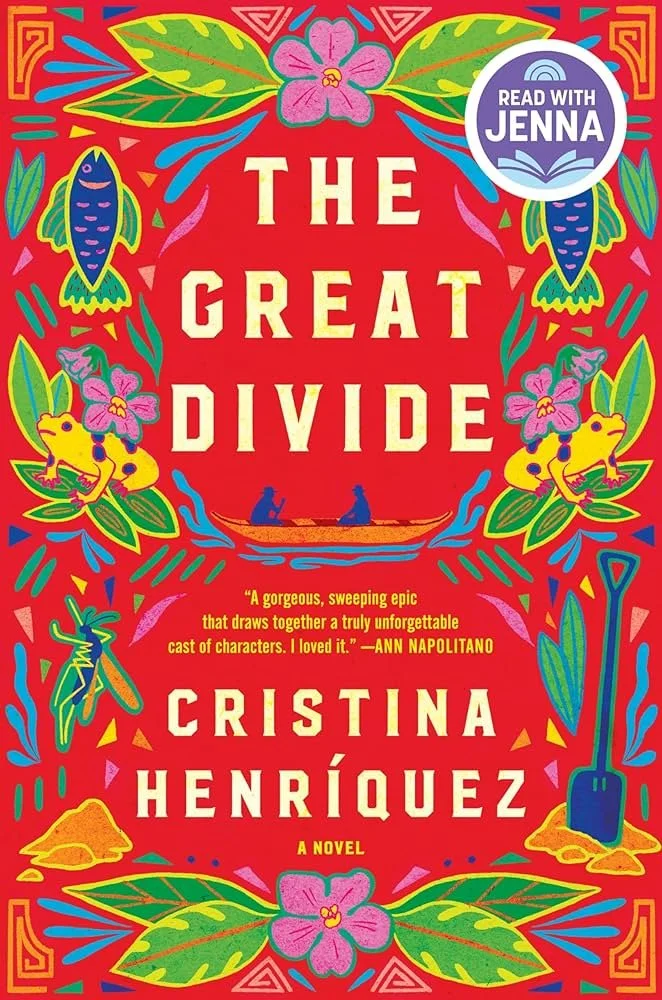The Great Divide by Cristina Henriquez: Book Review and Craft Tips
Part of my ongoing series Reading as a Writer to study what resonates with me as a reader and what craft tips I learned as a writer—and how debut authors like me can hopefully position their work for book club success!
The Great Divide Book Cover
The Premise
This post contains affiliate links. As an Amazon Associate, I may earn a small commission if you make a purchase—at no additional cost to you. I only recommend things I truly love!
I love a novel that takes me on a journey—not only through time, but to a specific place in the world I've never visited. The Great Divide (buy here) transports readers to Panama in 1907, during the monumental construction of the Panama Canal. Henríquez captures the schism and interconnectedness of what it must have felt like when a country is physically cut in half and one’s homeland is overflowing with people from other nations, all united by one massive engineering feat that will change the world forever.
Read with Jenna Book Club Pick for 2024 | TIME Magazine's 100 Must-Read Books
Publisher: Ecco (Harper Collins)
The Craft: Multi-POV Mastery (10+ Characters!)
The novel weaves together a constellation of storylines and characters, opening and closing with Francisco, a Panamanian fisherman living in a small house on a bay. Francisco is staunchly opposed to the Canal construction, while his son Omar goes to work for the very project his father resents. We also follow Ada, a brave girl from Barbados who stowed away to Panama hoping to earn money for her sick sister's surgery; the Oswalds, an American couple where the husband studies malaria and the wife battles pneumonia; and a rich tapestry of other voices—workers, managers, a former slave owner, a clairvoyant, protesters, and even the earth itself.
What Writers Can Learn: While I read the novel, I marveled at how Henríquez juggled all of the characters. She demonstrates how to manage multiple POVs without losing narrative focus. Each character has a distinct voice and purpose, and their stories interconnect in meaningful ways rather than feeling scattered. Plus, as a reader, you are never “stuck” in one character’s POV long enough to grow weary. The rhythm of the storylines ebbed and flowed, and the convergence of certain characters was satisfying.
The Research: Historical Fiction Is Hard!
Set during just a few months in 1907, every detail felt grounded in reality. According to interviews, Henríquez spent five years writing this book, conducting meticulous research throughout—even ensuring that every character movement correlated to the actual train schedules of the time. This attention to historical accuracy creates incredible verisimilitude that makes 1907 Panama feel vivid and real.
What Writers Can Learn: Research is writing! And also, speaking from personal experience, it can become a rabbit hole of delightful procrastination (at least for me - I have over 500 articles about female founders saved to my OneNote Novel Notebook, and that is just one of 30 topics I dove into.) But Henríquez shows how deep research can enhance rather than burden a narrative. The historical details don't overwhelm the story but instead create an authentic foundation that allows readers to fully immerse themselves in the world.
The Prose: "Sharp, Spare" Language with Emotional Depth
Critics have praised Henríquez's writing style as both expansive and intimate. Her prose manages to capture the grand scale of the Canal construction while never losing sight of the deeply personal stakes for each character.
What Writers Can Learn: The balance between epic scope and intimate character moments is so tricky to manage as a writer but Henríquez demonstrates how to zoom out to show historical significance while zooming in on individual human experiences.
Central Themes That Resonate
As all good historical fiction does, the novel deals with several themes that resonate today:
Massive change and upheaval - How individuals navigate monumental historical moments when a country is (literally) divided. Sounds familiar!
Ambition and sacrifice - What people are willing to endure for those and places they love. Since my novel is all about ambition and sacrifice, too, I loved reading about what motivated each of the characters to work on (or oppose) the Canal.
Family dynamics - Stories about divided families maintain tension in the story. I loved the father-son relationship between Francisco and Omar, a reminder of how stubborn family can be and how much we need each other.
Divisions and unexpected connections - Interconnectedness is one of my favorite themes, and the novel leverages the physical divide to show both separation and surprising bonds between people from different backgrounds.
The Personal Touch: Pen to Paper
I was fascinated to learn that Henríquez wrote this entire novel by hand, pen to paper! There's something beautifully fitting about creating a story set in 1907 using such a traditional method, and it inspires me to try handwriting scenes or short stories in the future. (All the more reason to buy School Supplies—see my latest faves here!)
The author, Cristina Henríquez, as photographed by Hinsdale Living. Bookshelves on point!
I recently met a friend for a co-working date at the Hinsdale Public Library (here in the western suburbs of Chicago) and was delighted to find The Great Divide prominently placed in the “Local Authors” section!
Based on her Hinsdale Living profile, she works in the library a lot. Perhaps if I work there, too, her magic will rub off on me. :)
My study room at the Hinsdale Public Library this week. Loved the natural light!
Final Thoughts
For writers, The Great Divide offers a master class in handling multiple POVs, conducting deep historical research, and balancing epic scope with intimate character development. For readers, it's an immersive journey to a time and place that shaped our modern world.


